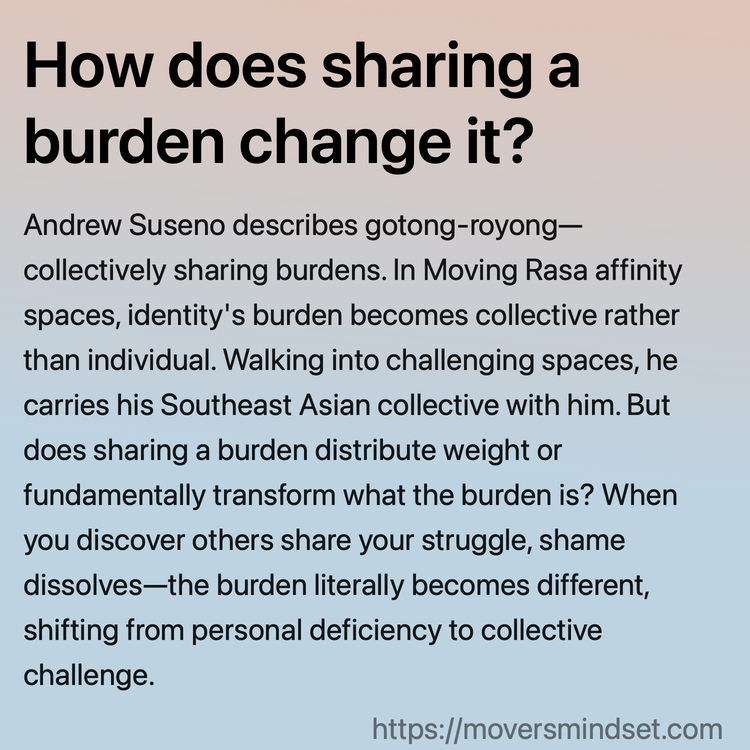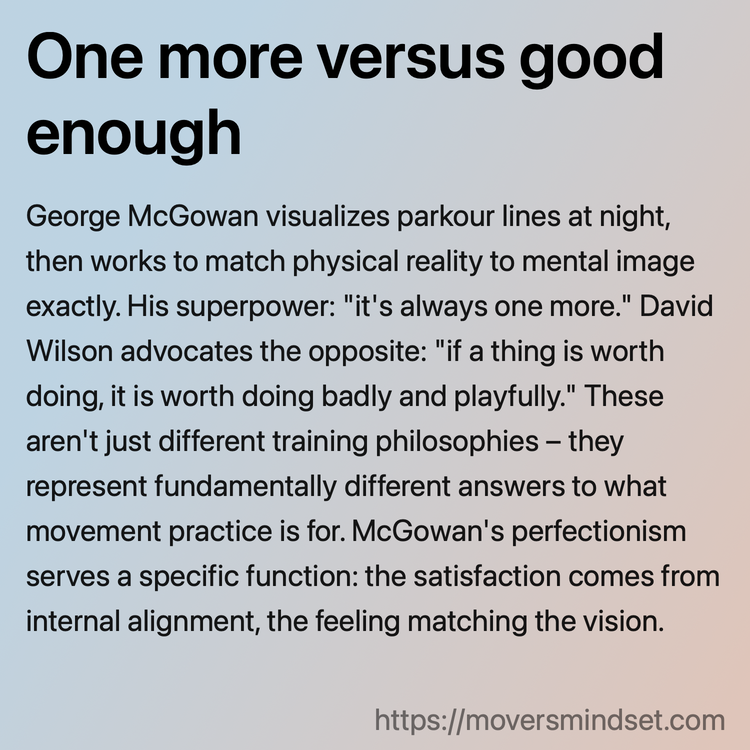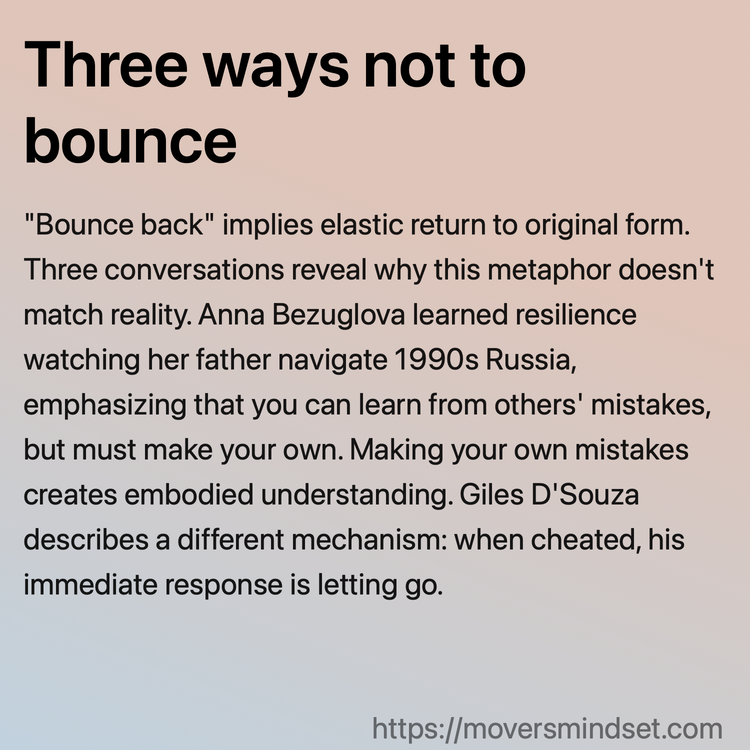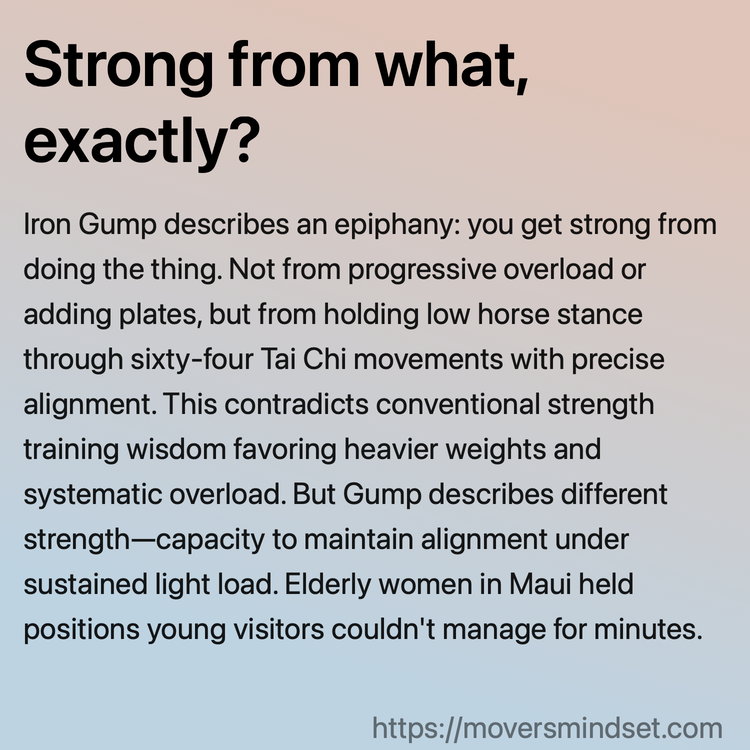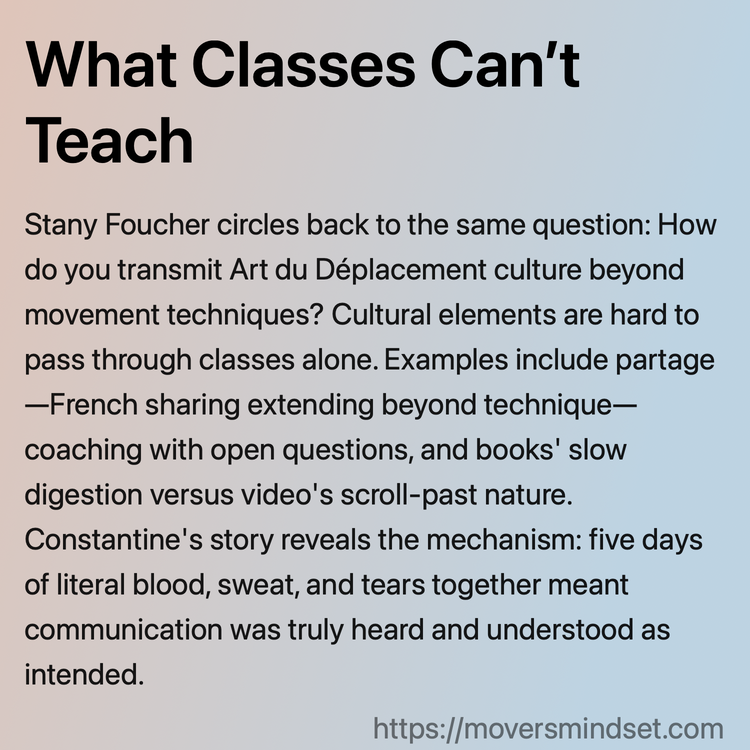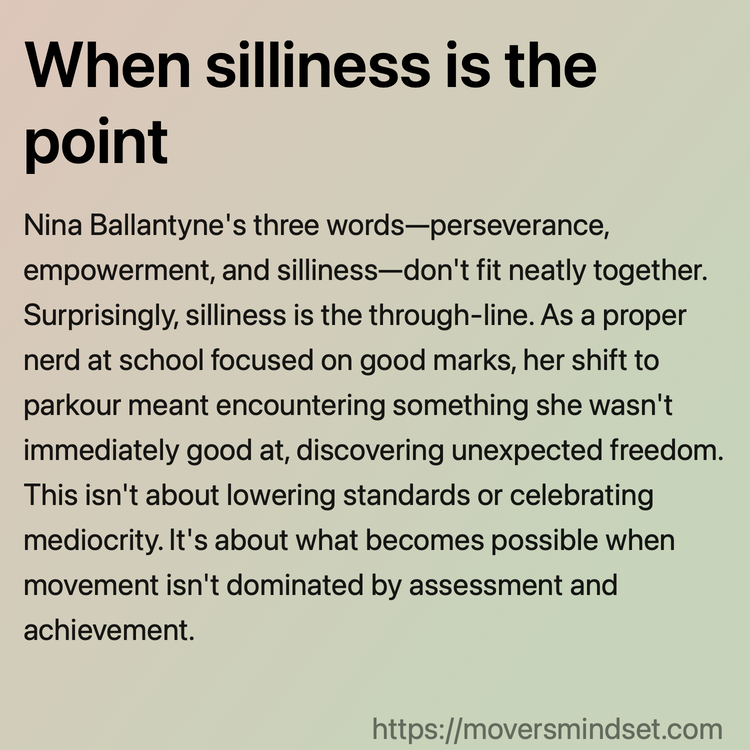Field Notes
Field notes are essay-length explorations that pick up threads from Movers Mindset podcast conversations—ideas that deserve more attention, questions that linger, insights worth developing. Each piece stands alone as a thoughtful reflection on movement, philosophy, and human excellence.
How does sharing a burden change it?
Andrew Suseno describes gotong-royong—collectively sharing burdens. In Moving Rasa affinity spaces, identity’s burden becomes collective rather than individual. Walking into challenging spaces, he carries his Southeast Asian collective with him. But does sharing a burden distribute weight or fundamentally transform what the burden is? When you discover others share your struggle, shame dissolves—the burden literally… more →
What gets lost when everyone’s experimenting
René Scavington describes early parkour as “a little meaner,” where trying something experimental would get hated on. Now experimentation gets celebrated, which seems clearly better. But what gets lost when experimentation carries no social cost? When everything playful gets love, experimentation becomes performance rather than genuine exploration. Real experimentation might actually be harder now. There’s… more →
When standing still is the hardest thing
Nima King trained as a bouncer and martial artist, but hours of standing practice in a Hong Kong living room proved hardest of all. Standing still with nowhere to hide brings up inner demons—no opponent, no technique, no external challenge to justify why it feels so difficult. We measure difficulty through intensity and complexity, but… more →
The sense you can’t teach
Cristina Latici, a movement coach and former dancer, describes being dragged by a dog toward a lamppost. Her body automatically solved the problem, spinning around the post to dissipate force. She calls this “touch”—an intuitive sense developed through years of physical discipline. It’s not just spatial awareness, but having a library of movement solutions available… more →
One more versus good enough
George McGowan visualizes parkour lines at night, then works to match physical reality to mental image exactly. His superpower: “it’s always one more.” David Wilson advocates the opposite: “if a thing is worth doing, it is worth doing badly and playfully.” These aren’t just different training philosophies – they represent fundamentally different answers to what… more →
Three ways not to bounce
“Bounce back” implies elastic return to original form. Three conversations reveal why this metaphor doesn’t match reality. Anna Bezuglova learned resilience watching her father navigate 1990s Russia, emphasizing that you can learn from others’ mistakes, but must make your own. Making your own mistakes creates embodied understanding. Giles D’Souza describes a different mechanism: when cheated,… more →
Strong from what, exactly?
Iron Gump describes an epiphany: you get strong from doing the thing. Not from progressive overload or adding plates, but from holding low horse stance through sixty-four Tai Chi movements with precise alignment. This contradicts conventional strength training wisdom favoring heavier weights and systematic overload. But Gump describes different strength—capacity to maintain alignment under sustained… more →
What Classes Can’t Teach
Stany Foucher circles back to the same question: How do you transmit Art du Déplacement culture beyond movement techniques? Cultural elements are hard to pass through classes alone. Examples include partage—French sharing extending beyond technique—coaching with open questions, and books’ slow digestion versus video’s scroll-past nature. Constantine’s story reveals the mechanism: five days of literal… more →
The part we don’t talk about
Julie Angel describes her practice as emotional, interesting, and joyful. While most movement talk centers on muscles, tendons, and range of motion, her focus is elsewhere: movement is emotional and connected. This frames biomechanics and force production as valid but fundamentally incomplete. Stripping emotion from movement discourse loses everything determining whether someone actually moves. Angel… more →
When silliness is the point
Nina Ballantyne’s three words—perseverance, empowerment, and silliness—don’t fit neatly together. Surprisingly, silliness is the through-line. As a proper nerd at school focused on good marks, her shift to parkour meant encountering something she wasn’t immediately good at, discovering unexpected freedom. This isn’t about lowering standards or celebrating mediocrity. It’s about what becomes possible when movement… more →
